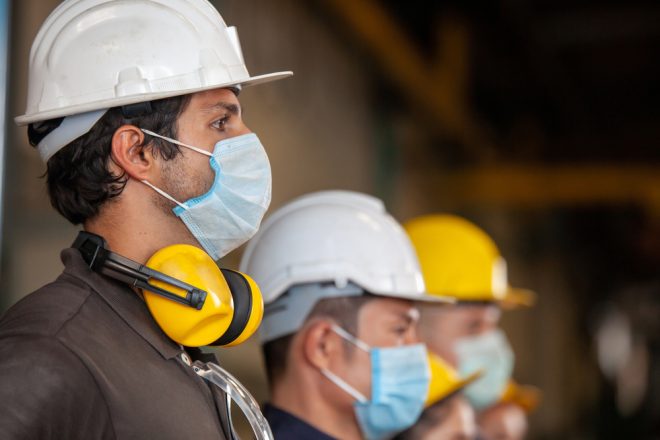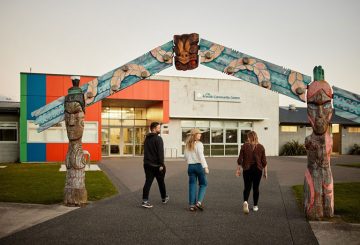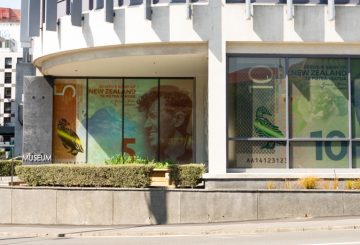在警报级别 2、3 和 4 时,大多数与公众互动的员工都必须戴上口罩。
这包括以下工人:
- 正在向房屋运送货物或食物,但只能在他们不在车内时才能运送货物或食物。
- 在咖啡馆、餐厅、酒吧或任何其他提供食物或饮料的企业或服务中为客户提供服务
- 提供密切联系服务,例如美发师、纹身师、按摩师或美容治疗师
- 在零售商店、超市、乳品店、加油站或其他向顾客出售商品的类似商店工作。
在
- 室内公共设施工作,例如图书馆、博物馆或健身房。但是,在游泳池工作的人不需要戴口罩。
- 驾驶用于公共交通的出租车、拼车、渡轮、公共汽车或火车。这不包括往返北岛和南岛的校车和渡轮。
处
- 于警报级别 3 的室内中学环境中(如果开放)。然后,致力于提供或支持提供教育的学生和教职员工必须戴面罩。
这些规则适用于警报级别 2、3 和 4。但是,并非上面列出的所有企业都可以在警报级别 3 和 4 下运营,有些企业只能开放进行非接触式交付,因此不应与客户互动。
不能戴口罩的工人的豁免
一些有残疾或健康状况的工人可能无法安全或舒适地佩戴口罩。如果是这样,这些工人不需要戴口罩。企业应真诚地与员工合作,看看是否可以采取其他健康和安全措施来确保员工的安全。
如果工作人员没有戴口罩,一些顾客和访客可能会感到不舒服。考虑让你的员工申请豁免卡,他们可以向客户展示或提供其他方式来向客户传达为什么你的员工不能戴口罩。保持高级别,不要透露个人信息。
人们可以通过 04 801 9100 或 info@dpa.org.nz 与新西兰残疾人大会联系,向新西兰残疾人大会索取卡片
一些工人可能出于个人原因不戴口罩,例如,他们留着胡须,无法佩戴口罩。出于个人原因,面部遮盖要求没有豁免。在这种情况下,企业应真诚地与员工合作,解决这种情况并探索替代方案。
客户在访问某些企业时还必须戴上口罩
这包括在使用公共交通工具和出租车、前往医疗保健或老年护理机构以及零售企业内部时,例如超市、药房、购物中心、室内市场、外卖食品商店以及博物馆和图书馆等公共场所。
客户在使用点击收集服务时不需要戴口罩(例如在警报级别 3),但我们鼓励使用这些服务。
只有年满 12 岁的顾客才需要佩戴口罩。
一些有残疾或健康状况的人可能无法安全或舒适地佩戴面罩,因此无需佩戴口罩。这些人可以获得免税卡,但不需要携带或出示豁免卡。
企业和服务部门不需要阻止没有面罩的人进入他们的场所或登上交通服务,因为有些人可以免戴口罩。
企业可能希望在自己的场所需要面罩。他们在这样做时需要小心,以确保他们不会歧视阻止他们佩戴口罩的残疾人。
在某些情况下,员工和顾客可以暂时取下面罩
除了出于健康和残疾原因的豁免外,在以下情况下也可以暂时取下面罩:
- 确定某人的身份,例如在购买酒类或完成金融交易时。
- 要吃药。
- 根据警报级别规则,允许在现场进食或喝水时进食或喝水。
- 与因为失聪或听力障碍而需要看别人嘴巴进行交流的人交谈
在这种情况下,企业仍应满足物理距离要求。
在要求客户佩戴口罩时确保员工的安全
除了满足警报级别的要求外,企业还必须继续遵守所有其他法律,包括《2015 年工作场所健康与安全法》(HSWA)。
虽然不要求企业确保人们佩戴口罩,但他们可能会采取措施鼓励人们佩戴口罩。
在考虑这些步骤时,企业应该考虑如何保持员工的健康和安全。这应该包括如果有人对鼓励人们戴口罩的工人生气,你可能会做什么。
如果人们拒绝戴口罩,则无需企业采取任何进一步的措施来制作口罩。
你应该确保你的员工得到足够的支持、指导和信息,包括知道事情升级时该怎么做。
为员工提供信息、培训、指导或监督(外部链接)— WorkSafe
我们建议您向员工提供在事情升级时他们可以使用的措辞,这样他们才能最好地缓解情况。我们建议您清楚工作人员何时应该离开或决定不继续与该人互动。如果工人认为工作会使他们或他人面临严重的健康和安全风险,他们有权停止或拒绝工作。
信息可以在 WorkSafe 的网站上找到。
请求帮助以解决与停止工作有关的问题(外部链接)— WorkSafe
你还应该考虑什么样的行为可能意味着你打电话给警察并公布这一点-例如,你可能想张贴标语表明不会容忍虐待你的员工。
有关面罩的更多信息,请访问 “团结起来反对 Covid” 网站。
戴上口罩(外部链接)— covid19.govt.nz


















































-360x245.jpg)











